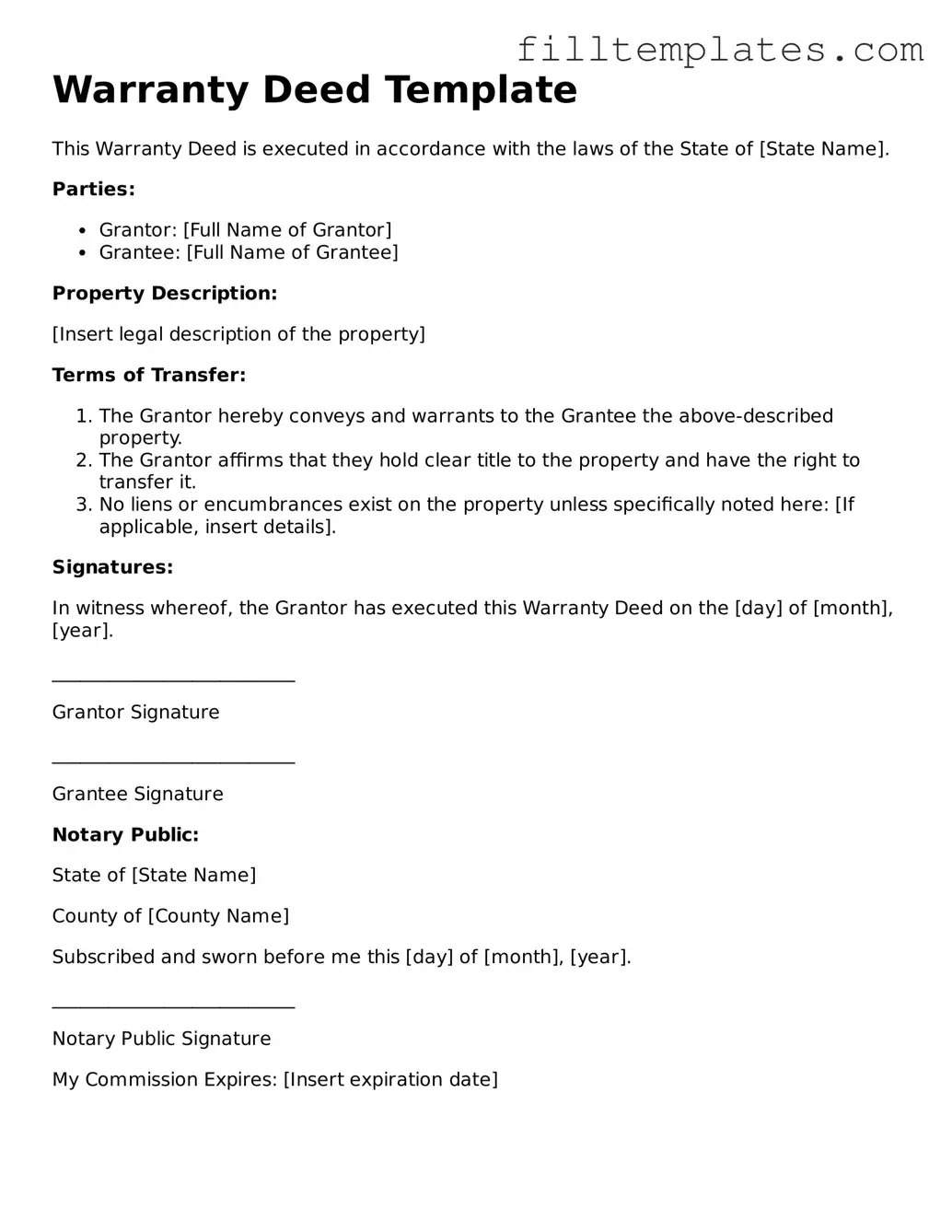Warranty Deed Template
This Warranty Deed is executed in accordance with the laws of the State of [State Name].
Parties:
- Grantor: [Full Name of Grantor]
- Grantee: [Full Name of Grantee]
Property Description:
[Insert legal description of the property]
Terms of Transfer:
- The Grantor hereby conveys and warrants to the Grantee the above-described property.
- The Grantor affirms that they hold clear title to the property and have the right to transfer it.
- No liens or encumbrances exist on the property unless specifically noted here: [If applicable, insert details].
Signatures:
In witness whereof, the Grantor has executed this Warranty Deed on the [day] of [month], [year].
__________________________
Grantor Signature
__________________________
Grantee Signature
Notary Public:
State of [State Name]
County of [County Name]
Subscribed and sworn before me this [day] of [month], [year].
__________________________
Notary Public Signature
My Commission Expires: [Insert expiration date]
